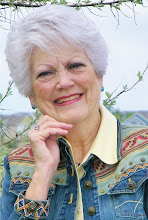Dr. Judith Briles is a guru of self-publishing. A member of Colorado Author's League, she puts out a newsletter filled with writing and publishing information, the all new AuthorU Newsletter, The Resource. It is 17 pages of authoring and publishing information. You can join her newsletter list by clicking on her name.
I have a grammar book called DON'T LET YOUR PARTICIPLES DANGLE IN PUBLIC. Its definition of a participle is "A word formed from a verb that is used as an adjective. It ends in ing. A dangling participle is defined as "a modifier that is positioned in the wrong place in a sentence (usually dangling at the end) to properly modify what it's supposed to." We saw examples in my last post that were actually at the beginning of the sentence.
On page 5.24, the book states that a dangling participle appears often as the first word of a beginning phrase to modify something it doesn't. Therein lies the problem we faced in the last post. Example: Sitting on my mother's lap, the circus was more enjoyable. It sounds as though the circus sits on the mother's lap, i.e. a dangling participle.
The problem, according to this book, can be solved by the skeleton rule: (1) head (who/what), (2) body (did/does/do what), (3) feet (to whom/what, (4) fluff (when, where, why how?) "Even if you put fluff up front, make sure your head comes before your feet." Example: (when) On arriving at the airport, (who) I (did what) met (to whom) my friends (where) at the gate.
Several examples demonstrate the ease with which you can create a dangling participle as well as how to correct them.
Subscribe to:
Post Comments (Atom)




No comments:
Post a Comment